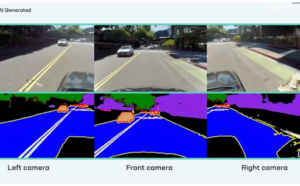COVID-19 turned Zoom from a business tool into a household name. Now, the $19 billion video-calling giant wants to reinvent itself and leave behind much of its old identity.
Graeme Geddes, Zoom’s chief growth officer, recently told Fortune, “Zoom is much more than just video meetings. Video is our heritage, and we’ll continue to innovate there, but we offer so much more.”
Zoom’s new goal? “We want to be known as an AI-first collaboration platform,” Geddes said. While many tech companies are adopting AI, Zoom’s shift aims to expand its services beyond simple video calls to boost overall productivity.
Earlier this year, Zoom launched Zoom Workplace, a suite of tools for both remote and in-person employees. This includes virtual whiteboards, guest check-ins, workspace booking, tech solutions, and feedback forms. Zoom also bought Workvivo, an employee engagement platform, for about €250 million ($272 million). Geddes noted this purchase “has nothing to do with video.”
Zoom is also enhancing customer-facing solutions. “We’re helping our customers with chatbot automation services that can escalate to phone calls,” Geddes explained. “Many workflows don’t involve video at all.”
This shift is timely for Zoom. As businesses return to office work, demand for remote video conferencing has dropped. Zoom’s stock has fallen from its peak of $559 in October 2020 to around $60 now.
Jacqueline Barrett, an economist, said, “At the start of the pandemic, many people flocked to Zoom. There was overexcitement about the stock, thinking growth would continue indefinitely.”
The market has become more competitive. “Many companies offer new features bundled with generative AI,” Barrett added. “If it’s not Google, Microsoft, or Cisco, many startups are focusing on every niche imaginable with AI.”
Zoom’s response includes expanding its products and using AI to improve capabilities. For instance, Zoom’s AI companion can automate note-taking and outline next steps during meetings.
Eric Yuan, Zoom’s CEO, said they are exploring digital twins or deepfake avatars. These AI-powered avatars would mimic the owner’s voice and appearance, acting independently in meetings and making decisions.
“Today, we spend a lot of time on calls, meetings, emails, and texts,” Yuan said. “In the future, I can send a digital version of myself to a meeting while I go to the beach.”
This technology is still developing but has already been useful. Geddes used Zoom’s smart summary feature to keep up with meetings while traveling, helping him make decisions and keep projects on track.
Zoom aims to do more than adapt to the post-pandemic world; it is setting the future for work and collaboration. By embracing AI and moving beyond video conferencing, Zoom is committed to staying a leader in business communication and productivity tools.
Source: artificialintelligence-news




